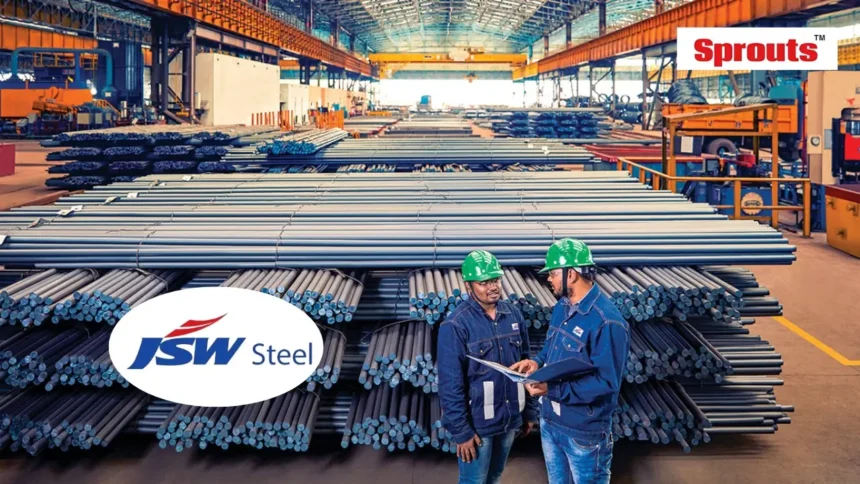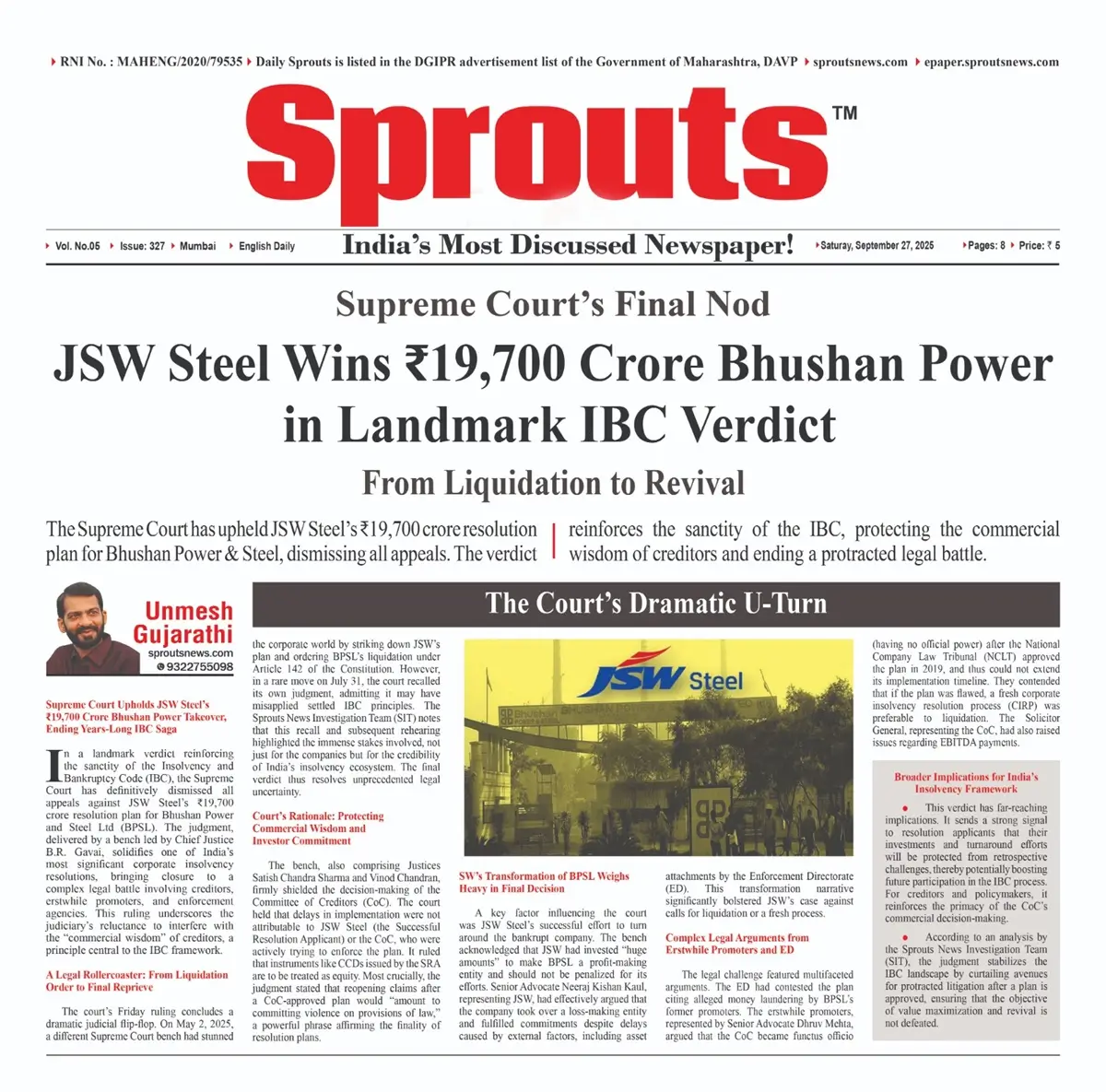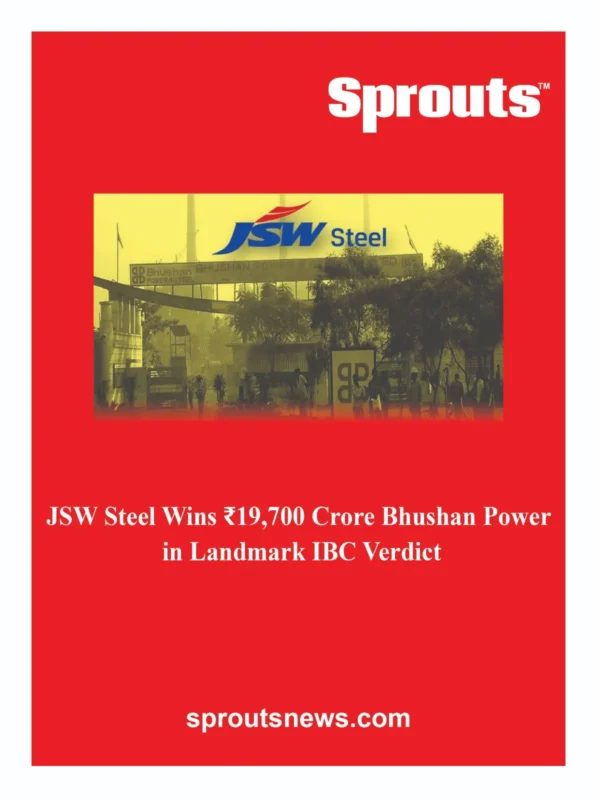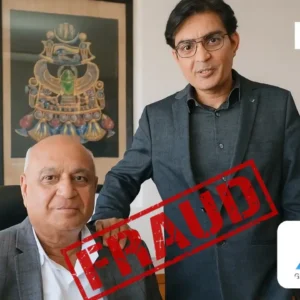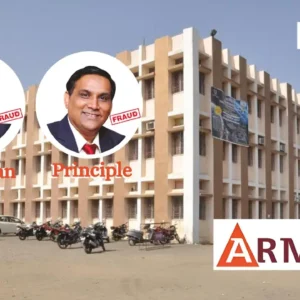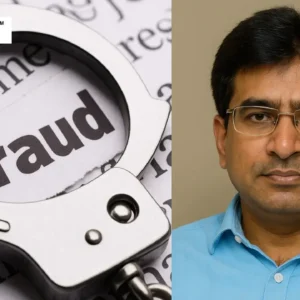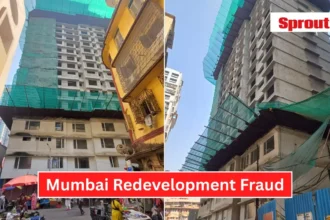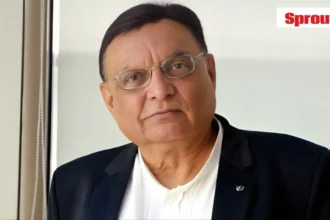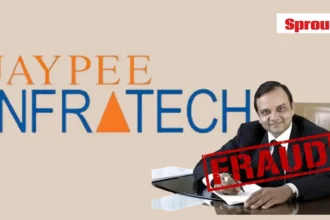JSW Steel Wins ₹19,700 Crore Bhushan Power in Landmark IBC Verdict
• Supreme Court’s Final Nod
• From Liquidation to Revival
• The Court’s Dramatic U-Turn
The Supreme Court has upheld JSW Steel’s ₹19,700 crore resolution plan for Bhushan Power & Steel, dismissing all appeals. The verdict reinforces the sanctity of the IBC, protecting the commercial wisdom of creditors and ending a protracted legal battle.
- JSW Steel Wins ₹19,700 Crore Bhushan Power in Landmark IBC Verdict
- Supreme Court Upholds JSW Steel’s ₹19,700 Crore Bhushan Power Takeover, Ending Years-Long IBC Saga
- A Legal Rollercoaster: From Liquidation Order to Final Reprieve
- Court’s Rationale: Protecting Commercial Wisdom and Investor Commitment
- JSW’s Transformation of BPSL Weighs Heavy in Final Decision
- Complex Legal Arguments from Erstwhile Promoters and ED
- Broader Implications for India’s Insolvency Framework
Supreme Court Upholds JSW Steel’s ₹19,700 Crore Bhushan Power Takeover, Ending Years-Long IBC Saga
In a landmark verdict reinforcing the sanctity of the Insolvency and Bankruptcy Code (IBC), the Supreme Court has definitively dismissed all appeals against JSW Steel’s ₹19,700 crore resolution plan for Bhushan Power and Steel Ltd (BPSL). The judgment, delivered by a bench led by Chief Justice B.R. Gavai, solidifies one of India’s most significant corporate insolvency resolutions, bringing closure to a complex legal battle involving creditors, erstwhile promoters, and enforcement agencies. This ruling underscores the judiciary’s reluctance to interfere with the “commercial wisdom” of creditors, a principle central to the IBC framework.
Click Here To Download the News Attachment
A Legal Rollercoaster: From Liquidation Order to Final Reprieve
The court’s Friday ruling concludes a dramatic judicial flip-flop. On May 2, 2025, a different Supreme Court bench had stunned the corporate world by striking down JSW’s plan and ordering BPSL’s liquidation under Article 142 of the Constitution. However, in a rare move on July 31, the court recalled its own judgment, admitting it may have misapplied settled IBC principles. The Sprouts News Investigation Team (SIT) notes that this recall and subsequent rehearing highlighted the immense stakes involved, not just for the companies but for the credibility of India’s insolvency ecosystem. The final verdict thus resolves unprecedented legal uncertainty.
Court’s Rationale: Protecting Commercial Wisdom and Investor Commitment
The bench, also comprising Justices Satish Chandra Sharma and Vinod Chandran, firmly shielded the decision-making of the Committee of Creditors (CoC). The court held that delays in implementation were not attributable to JSW Steel (the Successful Resolution Applicant) or the CoC, who were actively trying to enforce the plan. It ruled that instruments like CCDs issued by the SRA are to be treated as equity. Most crucially, the judgment stated that reopening claims after a CoC-approved plan would “amount to committing violence on provisions of law,” a powerful phrase affirming the finality of resolution plans.
Also Read: US-India Economic Relations Boosted by Multi-City Investment Tour.
JSW’s Transformation of BPSL Weighs Heavy in Final Decision
A key factor influencing the court was JSW Steel’s successful effort to turn around the bankrupt company. The bench acknowledged that JSW had invested “huge amounts” to make BPSL a profit-making entity and should not be penalized for its efforts. Senior Advocate Neeraj Kishan Kaul, representing JSW, had effectively argued that the company took over a loss-making entity and fulfilled commitments despite delays caused by external factors, including asset attachments by the Enforcement Directorate (ED). This transformation narrative significantly bolstered JSW’s case against calls for liquidation or a fresh process.
Complex Legal Arguments from Erstwhile Promoters and ED
The legal challenge featured multifaceted arguments. The ED had contested the plan citing alleged money laundering by BPSL’s former promoters. The erstwhile promoters, represented by Senior Advocate Dhruv Mehta, argued that the CoC became functus officio (having no official power) after the National Company Law Tribunal (NCLT) approved the plan in 2019, and thus could not extend its implementation timeline. They contended that if the plan was flawed, a fresh corporate insolvency resolution process (CIRP) was preferable to liquidation. The Solicitor General, representing the CoC, had also raised issues regarding EBITDA payments.
Broader Implications for India’s Insolvency Framework
This verdict has far-reaching implications. It sends a strong signal to resolution applicants that their investments and turnaround efforts will be protected from retrospective challenges, thereby potentially boosting future participation in the IBC process. For creditors and policymakers, it reinforces the primacy of the CoC’s commercial decision-making. According to an analysis by the Sprouts News Investigation Team (SIT), the judgment stabilizes the IBC landscape by curtailing avenues for protracted litigation after a plan is approved, ensuring that the objective of value maximization and revival is not defeated.

